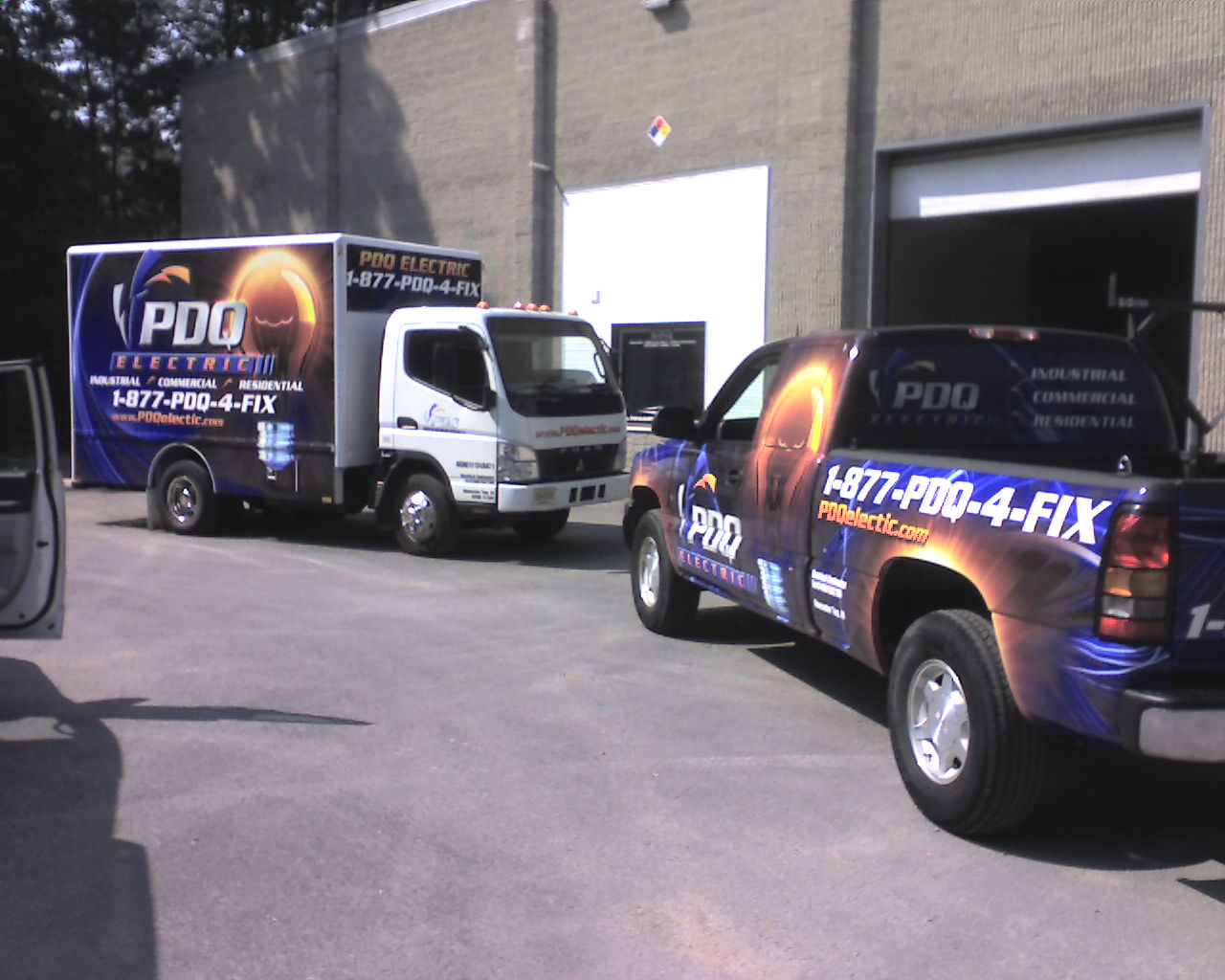 Industrial - Commercial
Industrial - Commercial  Electrical
Contractor
Electrical
Contractor 
PDQ Electric Corp
NJ, PA, DE, MD, NY, CT, DC, MA, RI
|

PDQIE - PDQ Industrial ElectricWeapon, Object, Explosive DetectionMagnetic Anomaly Detectors, are portals that employ arrays of digital sensors which scan and measure the environment within the portal. The sensors send data to a computer monitoring the system. Software called a neural network then compares incoming data with stored data that can identify weapons in great detail. By meticulously analyzing the data, the system can identify particular weapons hidden on a person or in a bag inside the portal. But that’s the future. For now, the nation’s federal, state, and local government buildings and airports must rely on existing technology to detect weapons and explosives. LOOKING FOR METAL WEAPONS WITH MAGNETISMWalk-through metal detectors or magnetometers protecting government and commercial facilities across the country use magnetism to search for weapons with metal components. The technical principles of metal detection are relatively simple. A power source sends a pulse of electrical current through a coil of wire built into one side of the detection arch. The coil generates a magnetic field that expands across the arch and then collapses. The collapsing field generates a second short-lived eddy current in the coil, a sort of electrical echo. Magnetometers repeat this process hundreds of times a second. The most sensitive equipment might generate 1,000 pulses per second. When the original pulse strikes a knife, gun, key chain or other metal object within the detection arch, it generates yet another electrical field, which alters the characteristics of the eddy current created by the collapsing pulse. Circuitry monitoring the eddy current detects the change, setting off the magnetometer’s alarm. A handheld metal-detecting wand works the same way, by sending out pulsed magnetic fields that expand, contract, and create eddy currents that vary in value when a metal object gets in the way. The walk-through detector alarms when it finds metal on a person. The wand, using a smaller field, alarms when it finds metal in a person’s pocket or shoe. Larger metal objects create larger secondary currents. By dialing the circuitry up and down, operators can control the sensitivity of the magnetometer to detect smaller and larger metal objects. The shortcomings of magnetometers are obvious. If the sensitivity is dialed down, small metal weapons, such as box-cutters, might go undetected. If it is dialed up, it will detect non-offending metal objects — thus creating a false alarm. Likewise, the equipment cannot detect plastic or ceramic materials that can be used to make weapons. Nor will it find an explosive made of non-metallic materials. Security experts point out, however, that effective security systems have many layers. Viewed as one line of defense, walk-through metal detectors do what they are designed to do: detect metal and suggest further examination by security officers. X-RAY MACHINES THAT DETECT WEAPONS AND EXPLOSIVESWhen trying to find weapons or bombs hidden on people, an X-ray image or picture is more revealing — and faster — than a beeping magnetometer. For several years, the U.S. Customs Service and federal and state correctional systems have employed X-ray body scanners to screen people for weapons as well as narcotics. Body scanners direct a low dose of X-ray energy at a person standing in front of a refrigerator-sized machine. The X-rays scan the person from head to toe, penetrating clothing and reflecting off the skin and any solid objects underneath the clothing. Detectors inside the equipment pick up the reflected X-ray energy, digitize this energy, and create an image on a monitor. The image will show ceramic and plastic weapons as well as other objects with significant density and mass. Body scanners may eventually become an adjunct to walk-through metal detectors at entrances to secure facilities. Before applying the technology widely, however, a civil rights issue must be considered. By penetrating the clothing, body scans create revealing images of people. Some observers call these scans electronic strip searches. More familiar X-ray technology is used to screen packages and briefcases carried by people into government buildings or onto airplanes. Conventional X-ray machines use conveyor belts to move bags and packages through an X-ray field. The system generates an image of items inside a bag or package. Because some materials react differently to X-rays than others, these systems generate images in different colors to help operators distinguish between organic and inorganic materials. While the appropriate colors will prompt X-ray machines to activate alarms, the technology relies largely on the knowledge and experience of the operator, who may question shapes and colors undetected by the system. Basic X-ray technology also scans the contents of large cargo containers arriving in ports by ship and entering the U.S. by truck at Mexican and Canadian border crossings. The technology used for this purpose is much larger than that used on conveyor systems, but is essentially the same. Medium-sized equipment in this category has openings large enough to accept palletized cargo. Mobile X-ray systems carried by large trucks can scan cargo housed in tractor-trailers by driving slowly alongside a parked vehicle. There are also building-sized X-ray scanners designed so that tractor-trailers can pull into the building, park on a platform and undergo examination. Recently, airports have adopted more advanced X-ray scanning systems to check passenger baggage for explosives. Called computerized tomography or CT scanners, these devices fire X-rays into baggage with circular arrays of emitters and detectors rotating around bags passing along a conveyor. A CT scanner creates and assembles a series of cross-sectional images into a single detailed image. CT X-ray technology provides operators with much more information than conventional X-ray systems and can even go so far as to identify actual explosive materials. TRACING MOLECULES OF EXPLOSIVE MATERIALSAnother kind of explosive detection technology, trace detection, aims to identify minute particles of explosive materials on the outside of bags, packages, and clothing. By and large, this technology works in conjunction with X-ray scanners that may suggest the presence of an explosive. Trace detection takes the analysis to a higher level of certainty, but not an absolute level. Theoretically, if someone touches something — toothpaste, a nitroglycerin capsule, or an explosive material — he or she picks up microscopic traces or particles of the material. These particles move about, attaching themselves to skin, fibers of clothing, and the outside of bags and briefcases. Trace detection devices identify these materials. Current Trace Detection Technology, in use at airports and government facilities around the country, is called Ion Mobility Spectrometry or IMS. To use IMS, a technician wipes a swab across a bag or a person’s clothing and collects trace materials of all kinds. Next, the technician places the swab into a machine the size of a desktop computer. The machine heats the sample to a temperature of approximately 200-degrees Celsius and vaporizes particles collected on the swab. Next, a radioactive source such as Nickel 63 subjects the vapor to a stream of beta particles. The beta particles collide with molecules in the vapor and knock electrons out of their orbits. Molecules without enough electrons are called ions, and this process is called ionization. A strong electrical field will also ionize molecules, and some trace detection systems use this method. The ions then flow into and through a 4-inch-long tube, called a drift tube. The system measures the length of time it takes various ions to make it all the way through the tube. All materials have a specific atomic weight. Heavier ions move more slowly than lighter ions. Scientists know how long it takes ionized molecules to travel through drift tubes. Government security departments maintain classified lists of explosive materials and their ionized characteristics. So when a trace detection machine at the entrance of, say, the FBI building in Washington, D.C., discovers an ion traveling at that speed of a particular plastic explosive ion, the system will alarm, and officers will investigate further. Current trace detection technology suffers from a problem called nuisance alarms. For example, one form of nitroglycerin is used in explosives, while another is used in heart medications. Both will alarm a conventional IMS system. Companies that supply this equipment are developing new approaches to analyze trace materials with more certainty. One of the newest ideas being explored is called Mass Spectrometry. Instead of focusing on the speed of ions in a drift tube, which depends on weight, mass spectrometry aims to measure the weight or mass of the ion, in the belief that more precise data will reduce nuisance alarms. Trace detection equipment also comes in three forms. - Desktop-sized analyzers fit on small carts that can be wheeled through facilities. - Hand held “sniffers,” appropriate for applications where space is limited. - Walk-through portals that send a puff of air from the floor of the machine to the top. The air puff sends traces into a trap set on top of the portal, and the trap feeds materials into the detector itself. NEXT GENERATIONThe technologies employed today to detect weapons and explosives have been around for years. To be sure, manufacturers continue to research these technologies, searching for ideas that will improve and refine their performance. Many companies, however, are researching next generation technologies with the potential of enhancing current capabilities in weapons and explosives detection, including magnetic anomaly detection already described. Another such technology is called Quadrapole Resonance or QR. Originally developed by the Department of Defense to detect land mines, QR directs a beam of radio waves at an object. The radio waves will penetrate the object and infuse whatever is inside. When the radio waves pass through an explosive material, the molecules of that material will polarize or develop a small electrical charge. As the molecules lose their charge, they emit a very weak radio frequency signal that can be picked up and analyzed to detect explosives. Because it relies on harmless radio waves that are easy to produce and monitor, this technology is considered to be one of the most promising in the field. While these and other new technologies are developed and refined for practical applications, Magnetometer, X-ray, and Trace Detection Technology will continue as front line defense. | |
(877) 737-4349 (Toll Free)
(877) PDQ-4-FIX (Toll
Free)
(856) 625-6969 (Text
Messaging)
PDQ ia an Acronym for "Pretty Damn Quick"
|
PDQIE, www.PDQIE.com, info@PDQIE.com, quote@PDQIE.com, Ryan@PDQIE.com, PDQ Industrial Electric, www.PDQIndustrialElectric.com, info@PDQIndustrialElectric.com, quote@PDQIndustrialElectric.com, Ryan@PDQIndustrialElectric.com are marketing tools of PDQ Electric Corp, a NJ Licensed Electrical Contractor. Reddy Kilowatt® is a Registered Trademark of Northern States Power Company. The information on this website is believed to be reliable, but we cannot guarantee that information will be accurate, complete and current at all times and should be reaffirmed by a licensed professional before relying on it. PDQIE will from time to time revise information, products and services described in-on this Website, and reserves the right to make such changes without notice. Use of this Website is entirely at your risk. Materials and information in this Website (including text, graphics, and functionality) are presented without express or implied warranties of any kind and are provided "as is". It is your responsibility to evaluate the accuracy, completeness and usefulness of any opinions, advice, services and information provided.